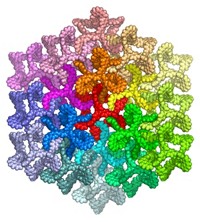Advertisement
Grab your lab coat. Let's get started
Welcome!
Welcome!
Create an account below to get 6 C&EN articles per month, receive newsletters and more - all free.
It seems this is your first time logging in online. Please enter the following information to continue.
As an ACS member you automatically get access to this site. All we need is few more details to create your reading experience.
Not you? Sign in with a different account.
Not you? Sign in with a different account.
ERROR 1
ERROR 1
ERROR 2
ERROR 2
ERROR 2
ERROR 2
ERROR 2
Password and Confirm password must match.
If you have an ACS member number, please enter it here so we can link this account to your membership. (optional)
ERROR 2
ACS values your privacy. By submitting your information, you are gaining access to C&EN and subscribing to our weekly newsletter. We use the information you provide to make your reading experience better, and we will never sell your data to third party members.
Metal-Organic Frameworks
Creating a new class of MOFs
New additions to MOF family could lead to new applications of the porous materials
by Mitch Jacoby
January 13, 2022
| A version of this story appeared in
Volume 100, Issue 2

The exceptional porosity and surface area of metal-organic frameworks (MOFs) have driven researchers to use this large class of crystalline materials for gas storage, separations, and other applications, some of which have been commercialized. In the great majority of MOFs, which consist of metal ions or clusters joined by organic linkers, the metals are in the +2, +3, or +4 oxidation states and the linkers are anionic. The unique electronic properties of MOFs with zero-valent or +1 metals could open the door to new applications. But such MOFs have been all but impossible to prepare because of their incompatibility with common anionic ligands such as carboxylates. So R. Eric Sikma and Seth M. Cohen of the University of California San Diego opted for phosphine ligands. The approach worked. The team prepared various types of linkers, including ones with four triphenylphosphine groups coordinated to silicon, and reacted them with several metal precursors. The study resulted in five new MOFs constructed exclusively from metal-phosphine bonds, including some with Pd(0) and Pt(0) metal centers and one Rh(I) compound (Angew. Chem., Int. Ed. 2022, DOI: 10.1002/anie.202115454). The synthesis strategy could lead to new members of this unexplored class of MOFs and provide novel ways of exploiting electron-rich metals, which are known for mediating catalytic transformations.




Join the conversation
Contact the reporter
Submit a Letter to the Editor for publication
Engage with us on Twitter